The changing workplace with Tony Antoniou
Design Insider is pleased to share with you an article written by Tony Antoniou, Founder & MD of Rainbow.
For the past 18 months I’ve been researching the changing workplace, and, in May 2020, I was contacted by a design magazine who wanted my outlook on what new products and trends may play a part.
To this day, my answer remains the same: the changes that are happening in the post covid workplace were always going to happen, but the process has simply been accelerated from years to months. After all, the technology to allow working from home has been available for many years, the fly in the ointment was trust; then lockdown happened and overnight, there was no option but to trust staff.
It turned out that working from home was much better than many companies had ever envisaged and actually worked well for a large proportion of companies; it’s the main driving force behind hybrid working becoming the next normal for a large amount of organisations.
With agile working always likely to happen, most manufacturers have been developing fantastic products over the past 5-10 years that will be very suitable for the changing office landscape. So my answer to the magazine was that it’s not any new products that will make the big difference moving forward, it’s the way they are used.
Companies now need to engage with the workplace professionals, strategists, architects, and designers who can help them to best utilise these to create spaces that people want to work in and entices them from their homes into the workplace.
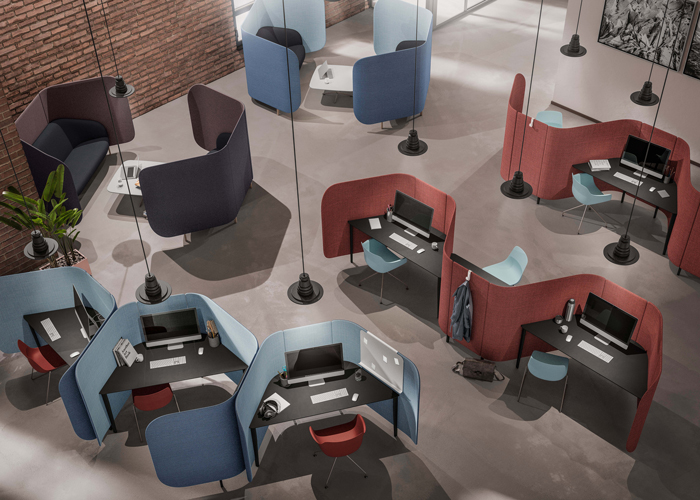
The general consensus is that most of the ‘thought’ work will be completed at home, and anything that requires group work or face-to-face meetings will be done at the office. This means that spaces such as meeting rooms, kitchens, and breakout areas will become even more important and must be improved further and quite possibly be expanded too as the office will be a more social space. However, it will still be essential to have quiet concentration places where individuals can carry out their work as not everyone is able to work from home. With offices becoming a meeting hub, they will become noisier and so the concentration spaces will be very important.
Workstations will still, and always be, a necessity in the workplace, but even these are becoming more aesthetically pleasing, and have a biophilic emphasis through the use of more natural materials such as wood and linoleum – which are lovely finishes to work on.
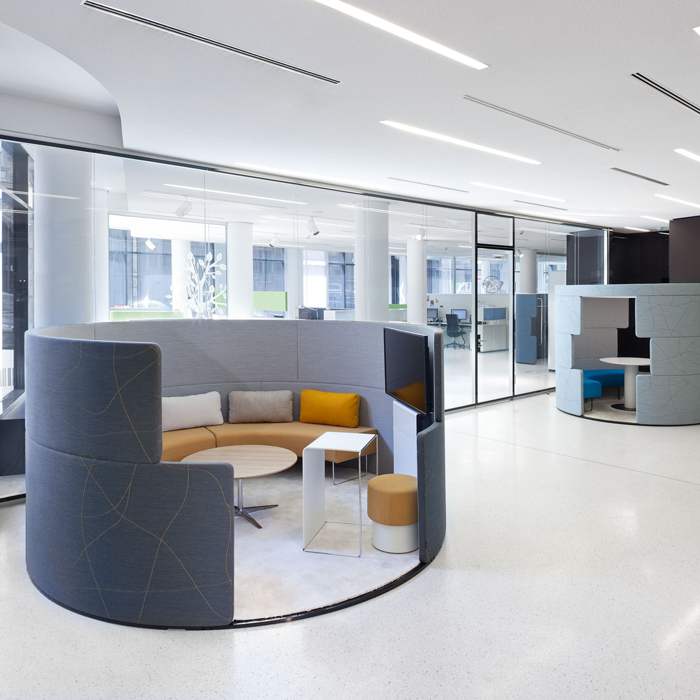
Meeting booths are another example of an item of furniture that will remain an essential part of the office for many years to come. They’re an ideal space for smaller, informal meetings, and come in a variety of sizes and shapes and are an alternative, or additional way, to meet the need for increasing meeting/presentation spaces. Plus they are suitable for groups to integrate with people on video calls too. Bleacher seating is yet another furniture configuration that is ideal for large presentations or group meetings.
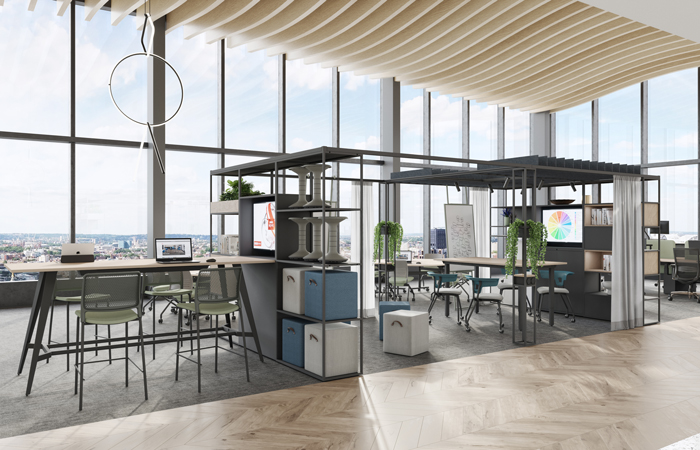
As the workplace landscape changes, choosing the correct furniture has become as important as ever. An example of one that has grown in popularity for all the right reasons is the modular open shelving unit; these frames allow companies to define areas without closing them in. They are less expensive than building walls, are much easier on the eye than traditional fabric panels, and also create space for lots of storage as well as the flexibility to utilise items such as whiteboards and TV screens.
These units are also a great place to incorporate plants, a trend that has drastically increased in popularity in the past 12 months, as you are able to hang them from the framework or add them onto shelves using planter boxes.
Some manufacturers have taken storage even further and created ranges that are completely versatile and can be used to create open rooms, including ceilings, or rails from which curtains can be hung – which are a really effective way of creating visual privacy.
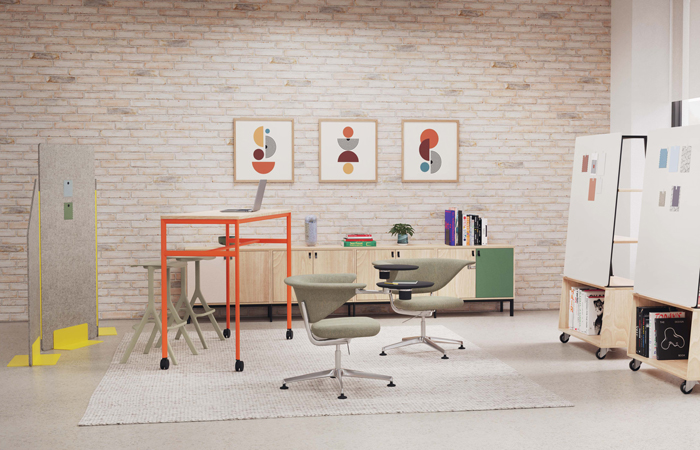
Versatility is the way forward, so products that can be moved around easily to create different zones will be very popular. In fact, one manufacturer has even gone as far as to design a range of products where everything, including desks, sofas, and presentations boards are on castors. This means that the space can be completely adapted to whatever type of area is needed, and the company doesn’t need to commit a space to a particular work style, it can be changed in minutes.
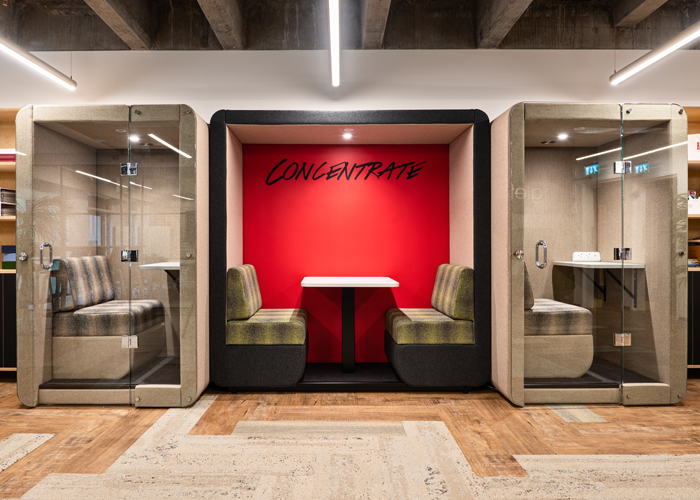
Using a mixture of modular units, meeting pods, and meeting rooms means that each eventuality is catered for (confidential meetings, informal chats, one-on-one chats etc), and stops bigger meeting areas being used by smaller parties.
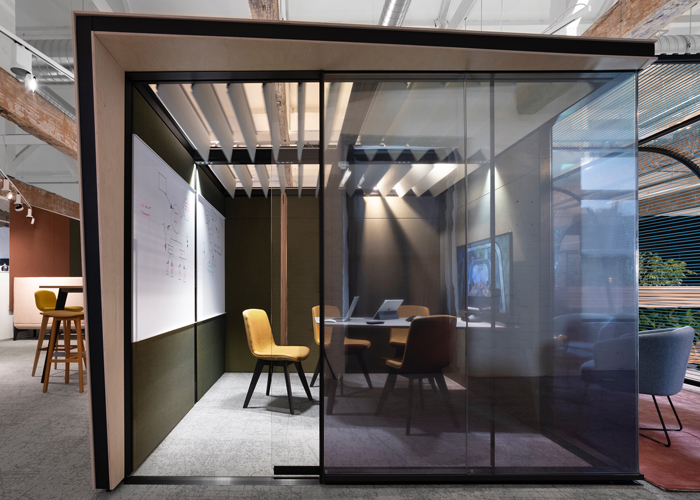
Kitchens and social spaces are vital and also need careful consideration as these are the places where staff will form and develop the friendships that make work more enjoyable – which in turn helps to reduce staff attrition and subsequently benefits the employer.
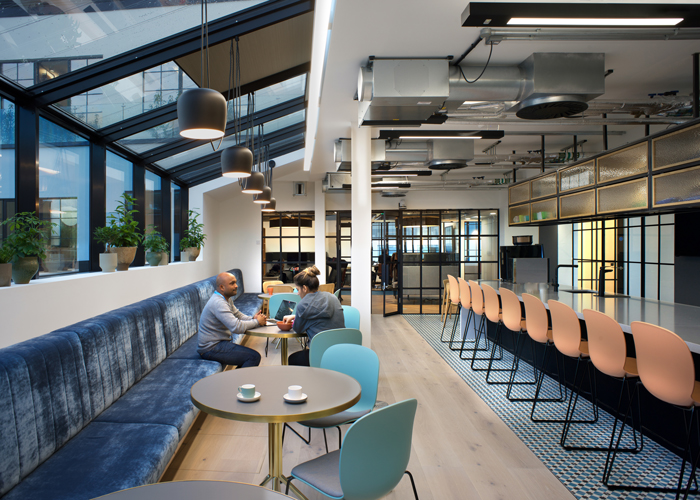
In terms of the office environment, other things to consider are acoustic solutions. These include free standing barriers as well as those that are wall or ceiling mounted. The use of sound masking is also increasing because as offices become more social, they become noisier too.
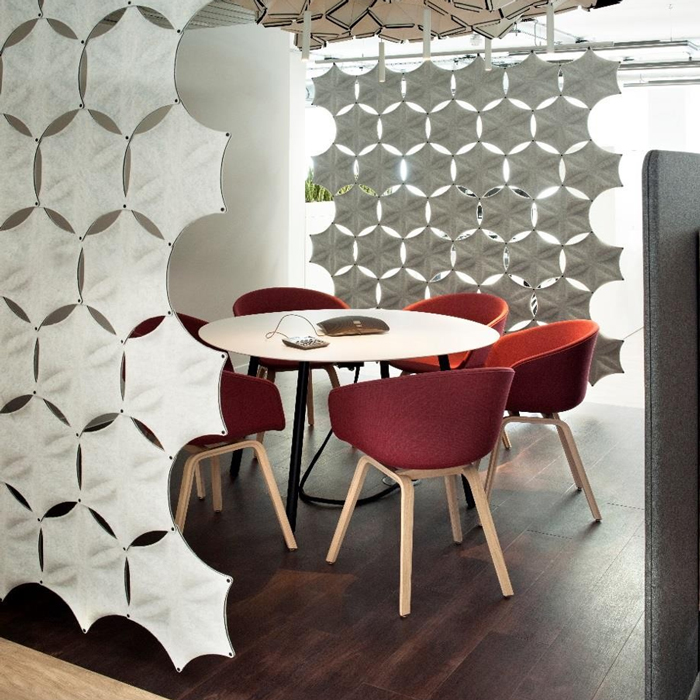
Having acoustic solutions in the office will also contribute to employee wellbeing as it helps to minimise some of the distractions that can cause people to become irritated. There has also been a large increase in other products such as living walls as the need for biophilic design grows. Living walls are a great way to bring a touch of nature into the office as many different plants can be grown – staff may even want to help with the upkeep.
A more dramatic approach to bettering wellbeing in the office is to create spaces that are specifically designed for purpose. However, this means different things to different companies; where an on-site gym may work for some businesses, a meditation space may work for another.
While I understand that furniture alone won’t make all the difference to creating a great workplace, it’s a good place to start. Creating the ideal work environment will differ from company to company and is dependent on a number of things; from culture to employee engagement and a great wellbeing solution, it’s definitely worth checking in with staff to find out what they want and what will help them the most.
Contact Rainbow




